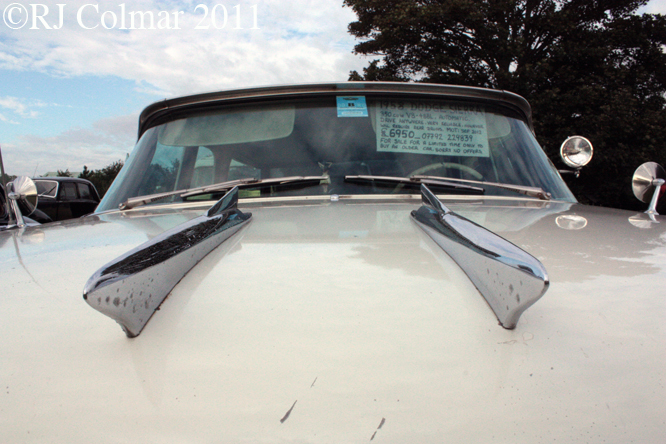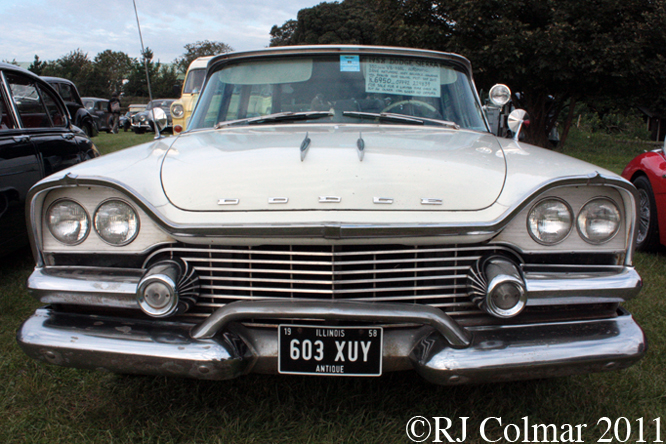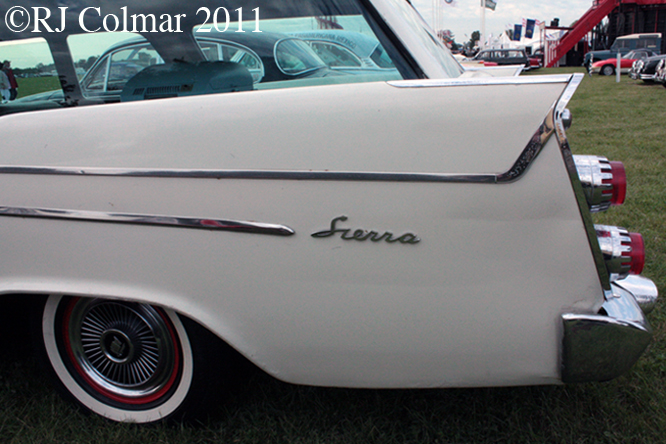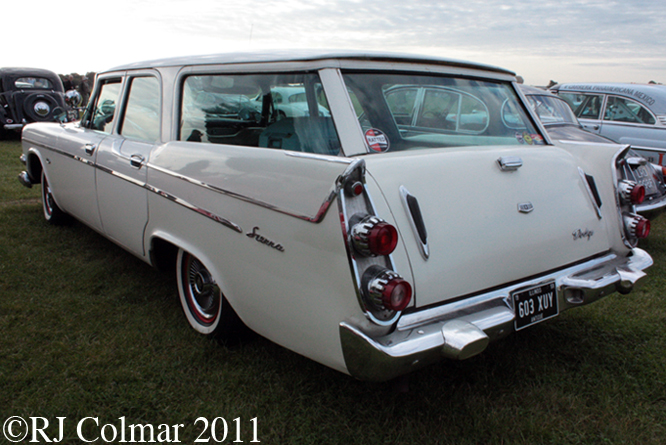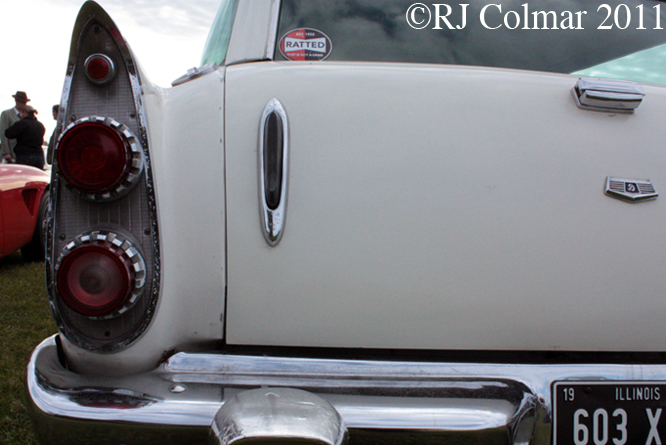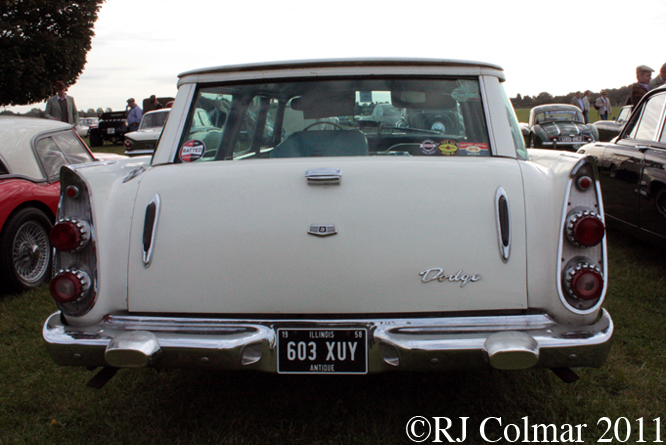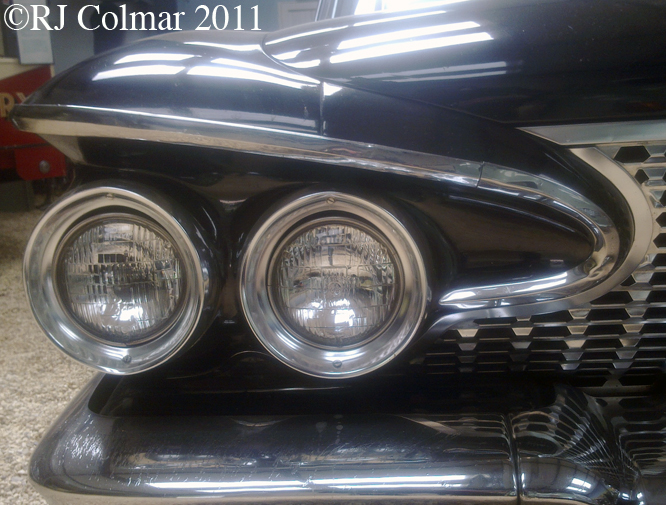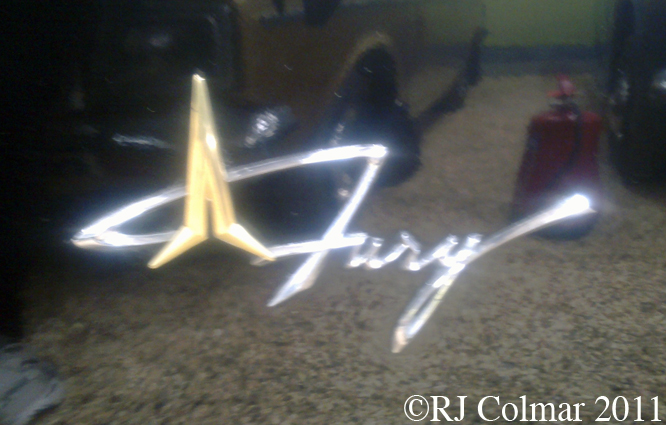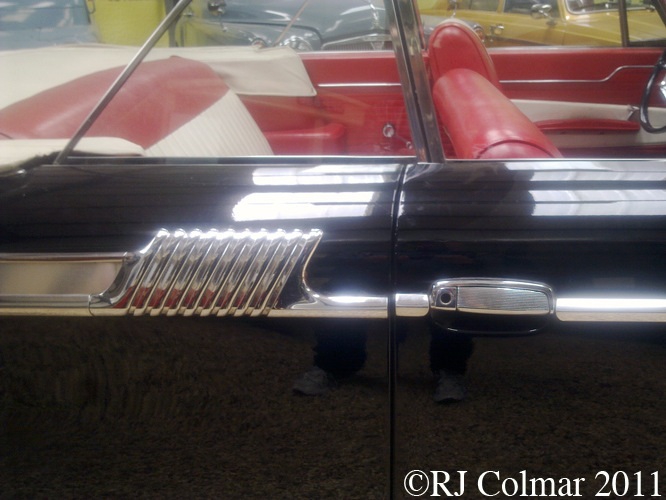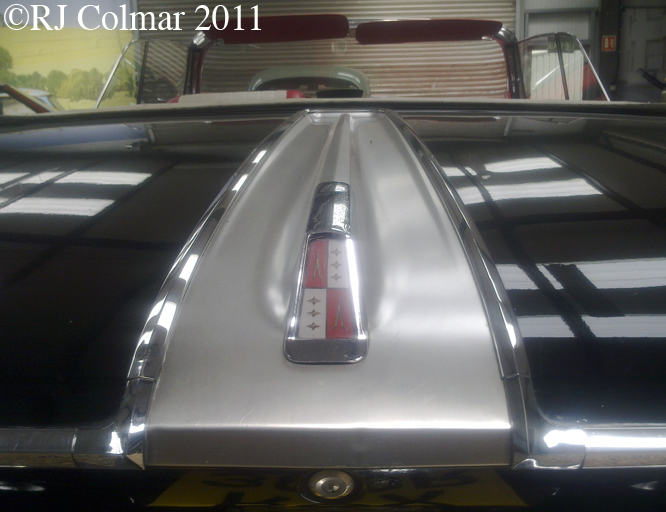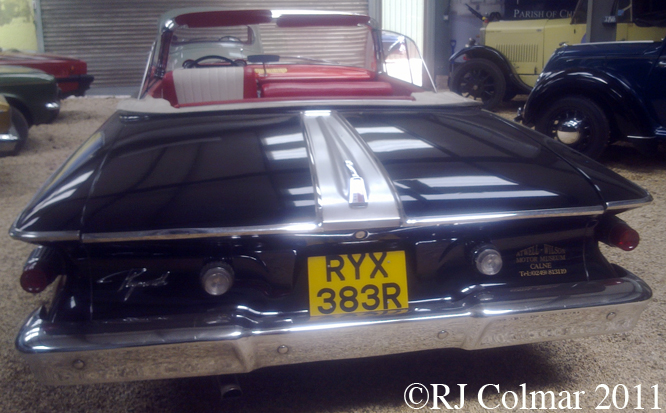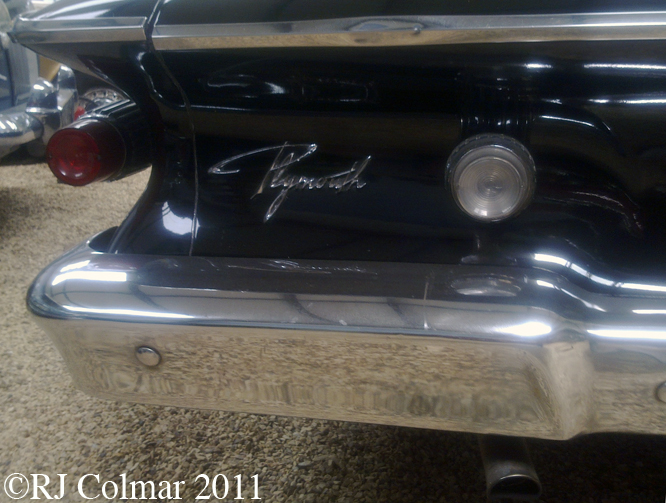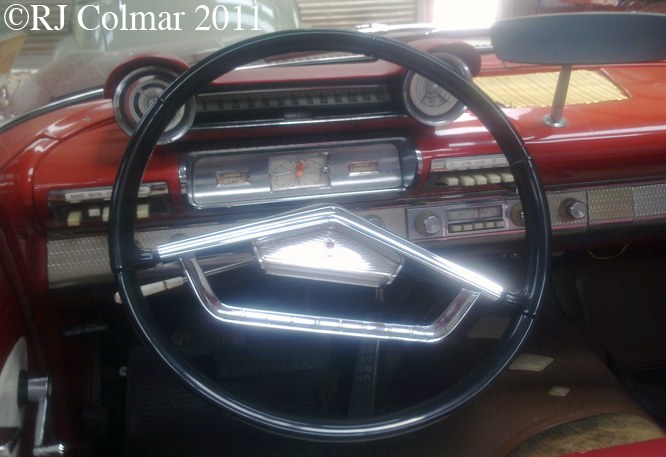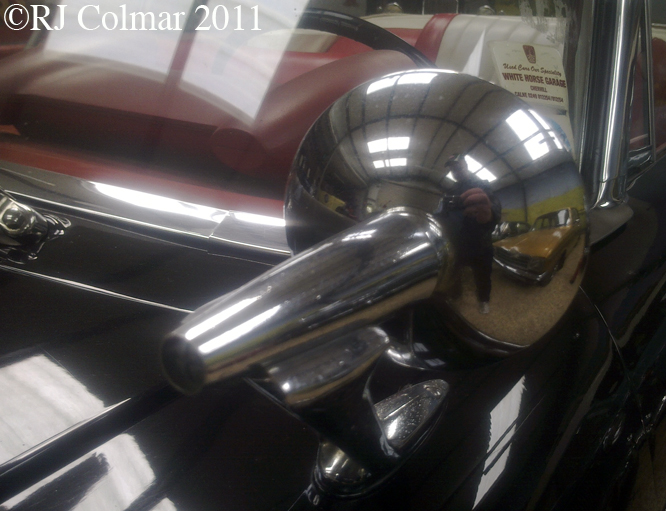Since I started blogging my love of acres of Detroit sheet metal has grown in no small part due to the the California Streets blogs of Jay Wollenweber.
So it is with a little trepidation that I offer today’s blog on a vehicle probably better suited to his patch than mine and one that he will probably be able to tell me a lot more about than me, namely the the nine seat 1958 Dodge Sierra.
The Sierra name in the UK is usually associated with a 1980’s 4 door Ford that bore a striking resemblance to a jelly mould, that only gained any credibility after Cosworth had dumped it’s finest 200 hp turbocharged twin cam 4 cylinder motor under the bonnet and Ford gave it an outsize tea tray rear spoiler.
I digress, from what I have been able to work out the Dodge Sierra seen here was the Estate / Station Wagon version of the Dodge Royal which sat in the middle of a Dodge model mix that included the Coronet at the lower end, the Custom Royal at the upper end with a short lived Regal Lancer at the very top.
It would appear that Virgil Exner was responsible for the design of both the first, introduced in 1955, and second, introduced in 1957, generation Dodges, that were marketed under these model names which featured the same body shells and running gear but different motors and trim levels.
To further confuse matters in 1958 the lower priced Plymouth and higher priced De Soto ranges appear to have used the same basic Dodge body panels for their models as well.
Among the options I have seen available for the Sierra, not necessarily the ’58 model year, are swivel seat, 3 speed transmission, power steering, power brakes, power rear window, wire wheels, full tinted glass, rear view mirrors (!) AM radio and a Kleenex dispenser.
I have no idea if the asking price of £7,000 seen on the windscreen of this car at Goodwood Revival represents good value for a vehicle with a 5.7 litre / 350 cui Super Red Ram Hemi V8 with 4 barrel carb which is in need of a pair of rear drums for the brakes, but I suspect if I was looking to make that California Trip along Route 66 with a vehicle that was not 100 point Concours Condition this might be a fun vehicle in which to take a 2000 mile ride.
Apologies if I have made any obvious blunders on this blog, please do not hesitate to log in and chime in with any corrections below.
Thanks for joining me on this Hemi edition of ‘Gettin’ a lil psycho on tyres’, I hope you will join me again tomorrow for Ferrari Friday. Don’t forget to come back now !

